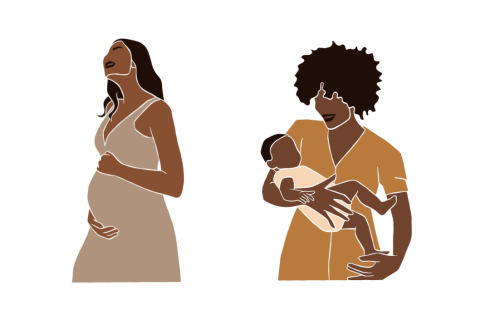Modern medicine has a problem: the idea that men have bigger, and therefore better, bodies persists, even today. Dr. Elizabeth Comen is a medical oncologist specializing in breast cancer at Memorial Sloan Kettering Cancer Center and assistant professor of medicine at Weill Cornell Medical College. She joins host Krys Boyd to discuss the history of sexism in medicine and why lingering stereotypes still affect women’s medical care – even as women make up the majority of medical students. Her book is “All in Her Head: The Truth and Lies Early Medicine Taught Us About Women’s Bodies and Why It Matters Today.”
Why progress in women’s healthcare lags behind
By Shaunessy Renker, Think Intern
Many women have reported the debilitating pain they have experienced while undergoing an IUD insertion, and yet, patients still cannot request anesthesia and no significant changes to the procedure have been made. It seems as though we’ve made immense progress in the medical field, but improvements in women’s healthcare still lag behind.
Take, for instance, medical textbooks. Dr. Elizabeth Comen, author of “All in Her Head: The Truth and Lies Early Medicine Taught Us About Women’s Bodies and Why It Matters Today,” observed that anatomy textbooks still show more diagrams and illustrations of the male bodies than female bodies. The only times she encountered illustrations of female bodies—even for basic anatomical function—was with respect to reproductive function.
“What you really see is this idea that women’s health is reduced to ‘bikini medicine’—our breasts and our reproductive function,” says Dr. Comen. “When in fact we are head-to-toe different than men.”
She says that by looking at the early history of medicine among the Greeks and Romans, she discovered their idea that women are an inverted, imperfect version of men. They believed women’s reproductive organs were essentially the inverted version of men’s organs.
“When looking at modern medicine and the medical devices that have been developed, the reference male—a 70-kilogram white man—is the basis around which medicine has been centered and then applied to women as almost an afterthought,” she says.
Throughout her years of treating thousands of women, Dr. Comen noticed many of them would apologize to her in the clinic. She realized there are two glaring problems women face when seeking medical care: One, they don’t want to burden or be a nuisance to the physician and two, their symptoms often get dismissed or downplayed. Because of this, they may hesitate to seek care at all or research symptoms on their own.
“You have this power dynamic of who’s suffering from the problem and how that influences the type of treatment or lack thereof that so many women are facing,” she says. “It speaks to this issue of delayed diagnosis and misdiagnosis for women and how we need to pay more attention to the things women are uniquely suffering from.”
For example, ‘frozen shoulder,’ a condition common amongst postmenopausal women, was historically ignored by the medical industry. Women can suffer for years from this condition during which they experience severe shoulder pain and the inability to move their arm. Dr. Comen says that historically, the treatment for this condition was called ‘benign neglect’ which meant orthopedic doctors would tell patients to ignore it and wait for the pain to cease.
A mistake Dr. Comen says some doctors continue to make is believing a disease that may have some psychogenic components means the patient could be faking or controlling their symptoms. She says this is especially the case among Black female patients.
“We know there’s been a tremendous dismissal of the experience of Black women and their pain and the assumption that women are exaggerating what they’re going through,” says Dr. Comen. “I think the ghost of the ‘hysterical women’ still looms large and haunts our medical system today.”
According to Dr. Comen, women who are operated on by female physicians receive better care on average than when they’re operated on by male physicians whereas a male patient will have the same outcome whether he’s operated on by a female or male physician.
“I want to be clear—this isn’t about warring factions between male doctors and female physicians,” says Dr. Comen. “There are all sorts of external pressures that influence the doctor-patient relationship…My real mission is to say this isn’t about having more women in medicine, it’s about understanding how men and women can honor what everybody is experiencing in their bodies and hopefully access better healthcare for all.”





